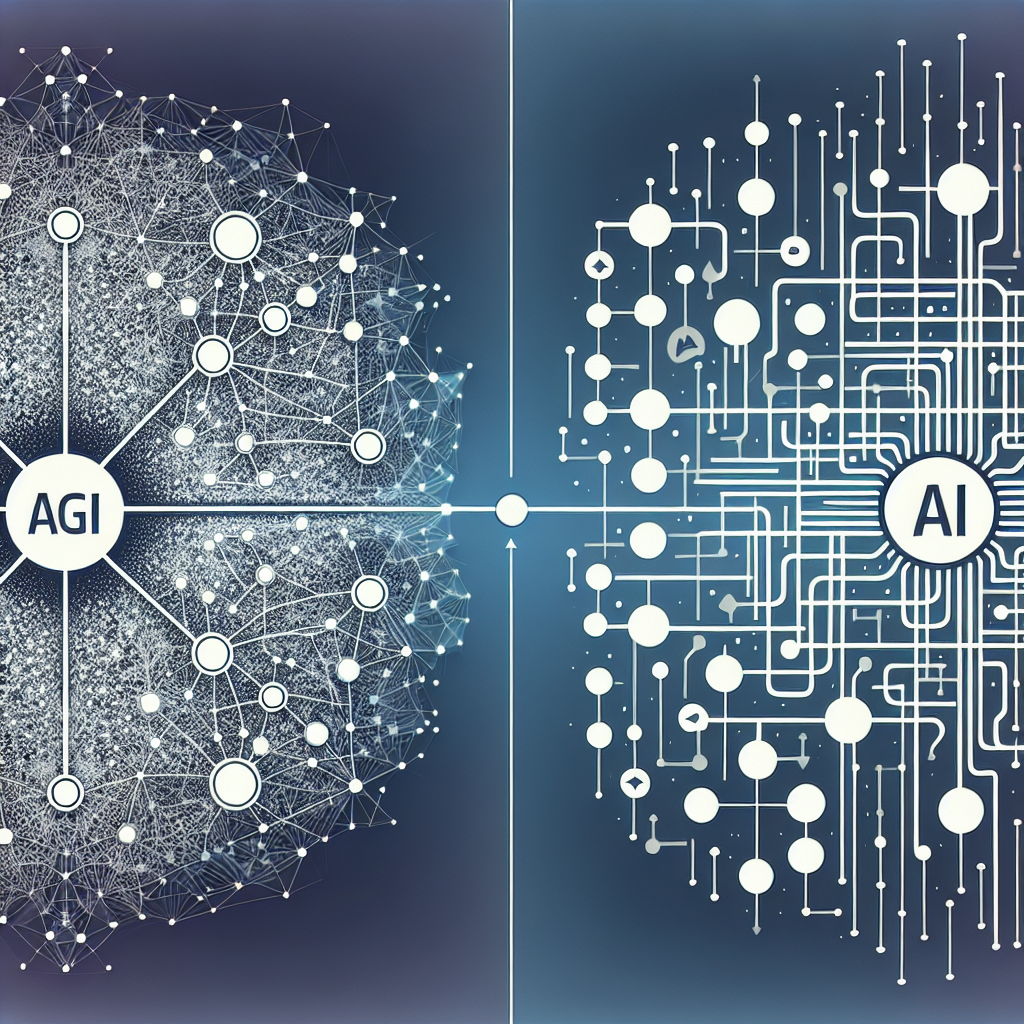Artificial Intelligence (AI) has become a buzzword in technology and business circles in recent years. It has the potential to revolutionize industries and change the way we live and work. However, within the field of AI, there are different levels of intelligence that are often misunderstood or conflated. Two terms that are frequently used interchangeably are Artificial General Intelligence (AGI) and Narrow AI. In this article, we will explore the differences between these two types of AI and what sets them apart.
Understanding Artificial General Intelligence (AGI)
Artificial General Intelligence (AGI) refers to a type of AI that possesses human-like intelligence and is capable of understanding and learning any intellectual task that a human being can. AGI is often referred to as “strong AI” or “full AI” because it has the ability to perform a wide range of tasks and adapt to new situations without being explicitly programmed to do so.
The goal of AGI research is to create machines that can think and reason like humans, with the same level of consciousness and self-awareness. AGI would be able to understand natural language, learn from experience, make decisions, and solve complex problems in a way that mimics human intelligence.
Despite significant advancements in AI technology, AGI remains a theoretical concept. While researchers have made progress in developing AI systems that can perform specific tasks at a high level of proficiency, achieving AGI is a complex and challenging endeavor that is still far from being realized.
Understanding Narrow AI
Narrow AI, also known as Weak AI or Artificial Narrow Intelligence (ANI), refers to AI systems that are designed for specific tasks or functions. Unlike AGI, Narrow AI is specialized and limited in scope, focusing on solving particular problems or performing specific functions within a narrow domain.
Narrow AI systems are trained on large amounts of data and are optimized to perform specific tasks with high accuracy and efficiency. Examples of Narrow AI applications include speech recognition, image classification, natural language processing, and recommendation systems.
Narrow AI has been successfully deployed in a wide range of industries, from healthcare and finance to marketing and manufacturing. These systems have demonstrated impressive capabilities in automating routine tasks, improving decision-making processes, and enhancing productivity and efficiency.
What Sets AGI and Narrow AI Apart?
The key difference between AGI and Narrow AI lies in their level of intelligence and adaptability. AGI aims to replicate human-level intelligence and cognitive abilities, while Narrow AI is designed to excel at specific tasks or functions within a limited domain.
AGI is characterized by its ability to generalize knowledge, reason abstractly, learn from experience, and adapt to new and unfamiliar situations. AGI systems are not limited to a specific task or domain and can apply their intelligence across a wide range of tasks and contexts.
In contrast, Narrow AI is specialized and focused on solving well-defined problems within a specific domain. These systems are optimized for efficiency and accuracy in performing specific tasks, but lack the cognitive flexibility and generalization capabilities of AGI.
Another important distinction between AGI and Narrow AI is the level of autonomy and self-awareness. AGI systems are expected to exhibit self-awareness, consciousness, and the ability to make decisions independently, similar to human beings. Narrow AI, on the other hand, operates within predefined boundaries and does not have the capacity for self-awareness or autonomous decision-making.
FAQs
Q: Can Narrow AI evolve into AGI?
A: While Narrow AI systems can be trained to perform specific tasks with impressive proficiency, they lack the cognitive capabilities and generalization abilities required for AGI. Evolution from Narrow AI to AGI would involve significant advancements in AI research and technology.
Q: What are the ethical implications of AGI?
A: The development of AGI raises ethical concerns related to privacy, security, employment, and the potential impact on society. Researchers and policymakers need to address these issues proactively to ensure the responsible and ethical deployment of AGI.
Q: How far are we from achieving AGI?
A: Achieving AGI is a complex and challenging task that requires breakthroughs in AI research, neuroscience, and cognitive science. While significant progress has been made in AI technology, true AGI remains a distant goal that is likely to take decades, if not longer, to achieve.
Q: What are the potential applications of AGI?
A: AGI has the potential to revolutionize industries such as healthcare, finance, education, and transportation by enabling machines to perform complex tasks, make autonomous decisions, and interact with humans in a more natural and intuitive way. AGI could also lead to advancements in scientific research, creativity, and problem-solving.
In conclusion, understanding the difference between AGI and Narrow AI is crucial for grasping the potential and limitations of artificial intelligence. While Narrow AI excels at specific tasks within a limited domain, AGI aims to replicate human-level intelligence and cognitive abilities. Both types of AI have their unique strengths and challenges, and researchers continue to explore ways to advance AI technology towards achieving AGI.

